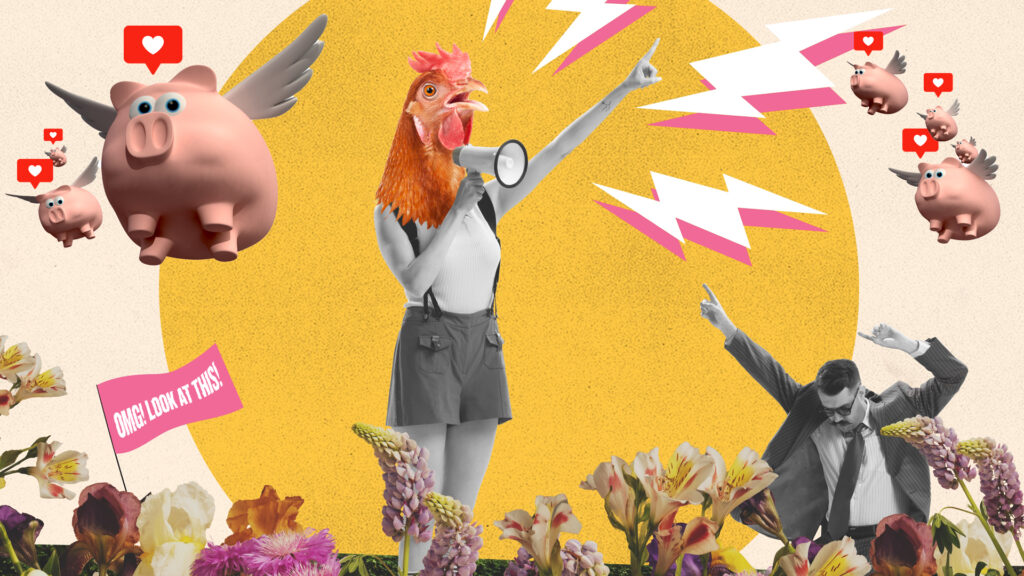
🔍 The Graveyard Gossip
In the evolving world of digital marketing, the banter in the bars of Shoreditch is that influencer marketing is on its last legs, has joined a book club, or may be about to start sipping piña coladas on a beach somewhere. But hold on to your hashtags. Let's look closer at this mystery to answer the question - is influencer marketing is truly about to start pushing up daisies, just enjoying a midday siesta or experiencing a rebirth.
🤔 So, Why the Rumours?
It seems that just as soon as any marketing trend becomes mainstream, those who want to appear like the smartest kid in the playground start talking about its demise. It’s like a rush to dis the currency of truth, in an effort to make a name for oneself and appear like a modern-day soothsayer.
Rumours are starting to circulate that influencers will soon become as extinct as the fax machine. No doubt, in some quarters influencers are becoming as overused as the term “like” at a 16 year old’s birthday party and losing any semblance of authenticity.
But before we organise a virtual funeral, there are suggestions something else is going on and influencer marketing may be about to get a do-over rather than a defibrillator.
From a recent straw poll of our clients using influencers, all still believe in their power.
However, there’s been a major shift in the type, frequency and style of their deployment AND in the creative that goes with it.
📷 Camera with solid fill Insta Filters are Just Sooo 2023
Sceptics argue, with the rise of authenticity and inherent consumer distrust, influencers are losing their charm. But, if authenticity is the key, then influencers are probably just switching from filter-heavy selfies to #iWokeUpLikeThis pics instead.
At the dawn of influencer marketing, the ‘talent’ (I use the term loosely) in question was often engaged to pretty much hoodwink the audience into believing they were genuinely recommending products and services they routinely used in their very normal personal lives. A public service offered out of pure altruistic generosity. And for a while, we would believe lines like: “I’ve been drinking this almost unknown Himalayan Kale Extract all my life and I’m a 53 year old, working mother of five, and still have the energy of an 18 year old Olympic gymnast”. The product would fly off the shelves.
But we’ve seen through the deceit.
The smart money is now on using influencers with both value to add and something to lose – their reputations and credibility. If they have neither to start with, they’re at best, low-value and at worst, an absolute brand liability.
We’re much more likely to take notice of an existing, genuine, expert with authority in a particular field. People who don’t hide their commercial interest in recommending third party products.
An opening line like: “I’ve been asked to try this product by Brand X, so here’s what I think, warts ‘n all!” is likely to garner way more engagement than the hoodwink approach.
💀 The "Death" Toll
Contrary to the doubters, influencer marketing spending is on the rise.
The global influencer marketing industry hit a staggering $21.1 billion by the close of 2023, surpassing original forecasts of $15 billion for 2024! (insert dramatic gasp). And 2024 is expected to be another hockey stick growth year. So, either businesses are throwing money into an influencer-shaped black hole, or influencers are thriving like social media superheroes because maybe, just maybe, if treated with respect, it’s actually working!
📱 The Living Dead - Influencers Edition
Our favourite social media celebs are far from extinct. In fact, they're multiplying faster than TikTok cat videos. If you doubt their pull, just check out the engagement rates.
But their creative presentation has to be real, authentic and often grounded in entertaining the audience at the same time as peddling product. As a result, ‘creator’ is often preferred as the job title and perhaps the word ‘influencer’ is indeed on its way out.
But what’s in a word? Especially when the primary purpose for the creation is to shift consumer behaviour and encourage purchase decisions. The finest influencers have an intoxicating combo of skills, simultaneously being masters of content creation and sales psychology.
👍👎The Great Brand/Influencer Creative Debate
This is where we creatives get all animated.
What’s more important: Influencer authenticity or being on-brand? There’s no doubt, it’s a tricky balance to strike. Over-brand and you risk losing the very authenticity you’re aiming for. Under-brand and the influencer may get all the content kudos in the world, but your sales needle barely moves. Allow too much freedom, and brand values may be compromised. Impose too many restrictions, and you might as well put out an ad of your own. So, where’s the starting point in the creative debate?
I’m afraid, to make influencer marketing really work, it has to be about them first. In order for your brand to benefit, creative needs to work for the influencer and their audience, and usually, there needs to be some give and take, often with a bit of flexibility at the edges of the brand guidelines without losing fundamental compliance.
If you strategically align with the right influencer, a beautiful, symbiotic relationship will more likely happen automatically. But this takes time and effort.
We’ve worked with brands and influencers large and small to ensure the creativity of content achieves a thumbs-up from the brand police, without the influencer feeling like they’ve sold their soul to the devil! Retaining the influencer’s personality and encouraging it to shine through the content (without damaging the brand of course) will yield results - even if it is often like treading on eggshells to achieve.
🥑 The Avocado Toast Paradox
Influencer marketing is like avocado toast – you either love it or hate it, but it's always on the menu. Brands continue to collaborate with influencers because human beings are wired to believe third-party endorsement of those we trust. Simple.
The power of an authentic recommendation from a trusted expert will often trump a direct sales pitch from the brand in question itself. And with the added layer of FOMO, we may just convince ourselves we like Avocado Toast, if everyone else around the table is tucking into theirs.
🎞️ Big Things Come in Small Packages
If you thought bigger is better in influencer audiences, think again. There has been an increasing trend away from macro influencers with vast audiences to micro and nano influencers, due to their high engagement rates, authenticity and often more niche audiences. These smaller influencers may have fewer followers, but their commercial and brand impact can easily overtake the A-listers when it comes to RoI and sales. According to Forbes, creators with 100,000 to 200,000 followers drive 5.6 times the sales of macro-influencers with 200,000 to 500,000 followers.
Look for influencers who have a following around very specific topics. Check not just follower numbers, but likes and comments. And rising stars on their social media ascendency, rather than stratospheric superheroes of stage and screen, may well result in a bigger bang for the buck when it comes to the final numbers.
🚀 Final Verdict
Influencer marketing isn't dead; it's just evolving – thankfully! It's the Madonna of marketing – constantly reinventing itself. So, if you thought influencers were joining the marketing graveyard, think again! They're more alive than ever, sipping on Himalayan kale smoothies and collaborating with brands that understand their true strategic value.
And in the world of marketing, what appears dead today might just be trending again tomorrow! 💃🚀
IS INFLUENCER MARKETING DEAD? Or JUST EVOLVING? Share Your Thoughts
'Twas the CHRISTMAS season for marketers to be jolly. The lights. Nigella back on the telly. And the seductive TV ads screening back-to-back.
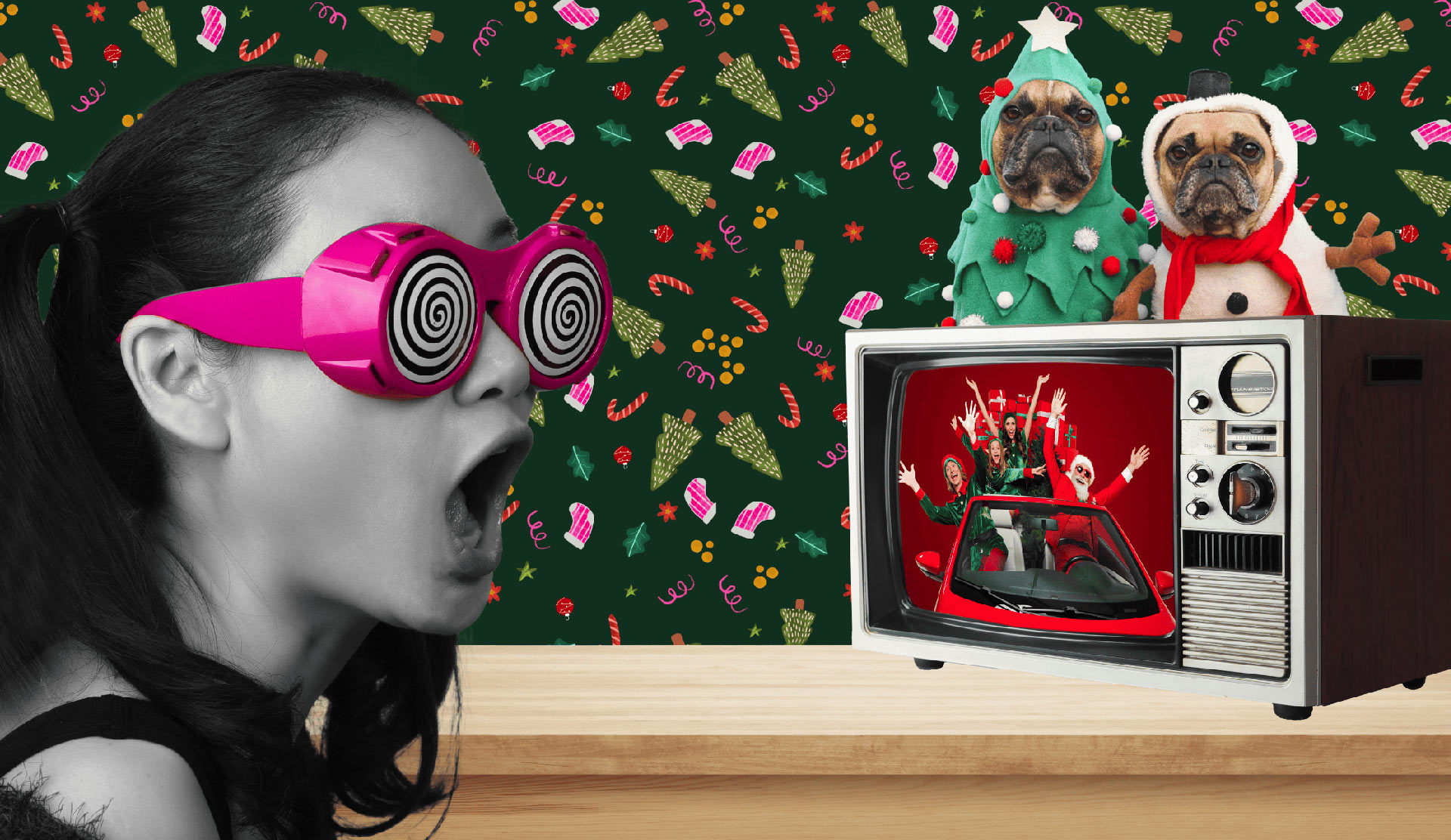
But behind every jingle bell, every shiny bauble and every elf facing near death at the hands of a celebrity, there was a lot of science conjuring up Christmas marketing magic. As the festive spirit sweeps across the nation every year, creative agencies play a crucial role in helping brands engage audiences on a memorable and meaningful level, seeking to lock in their spending power for the coming year.
So, whether it was grannies sledging down snowy hills for Amazon, Hannah Waddingham getting feisty for M&S, or lammas dressed by TK Maxx that got your Christmas "ahhh" , let’s unwrap the science behind festive campaigning success to explore how a touch of creative magic dust can be sprinkled on commercial objectives to achieve the best return.
Cognitive Christmas Priming and Nostalgia.
Cognitive psychology emphasises the concept of priming, where exposure to certain stimuli influences subsequent behaviour. Studies have shown festively-themed visuals and messaging act as cognitive primers, activating nostalgic neural pathways in the human brain.
Neuroimaging data reveals heightened activity in brain regions associated with memory and emotion, underscoring the neurological basis of nostalgic responses employed in Christmas marketing campaigns.
Anticipation and Festive Rituals.
The anticipation leading up to Christmas Day is a psychological journey good creative agencies strategically navigate. Given the season seems to start earlier every year, we need to craft content campaigns with longevity. We would never recommend decking all the halls with bells and holly all at once. It has to be drip fed, layer by layer, to avoid boredom, keep the campaign fresh and retain the sense of wonder and engagement throughout the festive season. That’s why so many brands ‘tease’ Christmas from mid October. A few weeks later, the clocks go back and it starts to feel wintry – another opportunity to ramp up. Then we get Halloween out the way – the last milestone.
And then the festive floodgates open in the race towards the big day.
Countdown widgets and features on retail websites see a >25% spike in user engagement, highlighting the impact of these principles on online behaviour.
Crafting campaigns with an unfolding narrative, building anticipation through countdowns and FOMO tactics, and incorporating elements of familiar rituals, contribute to the overall customer experience. Brands become intertwined with audiences' communal anticipation. It creates a sense of excitement and eagerness among consumers.
Wishing You A Very Relevant Christmas.
Get Christmas right and you could secure customer loyalty long after the last turkey sandwich has been enjoyed.
Semantic analysis tools used to dissect relationships consumers form between brands and Christmas-related concepts reveal clues to holiday messaging. Through natural language processing (NLP), agencies can quantify the strength and nature of these associations, allowing for strategic alignment with the values and aspirations consumers seek during the holiday season. Semantic network analyses reveal the intricate web of brand perceptions within the Christmas context.
According to Emotion AI analytics, Christmas ads that elicit high levels of joy and generosity achieve an average engagement rate 40% higher than non-holiday campaigns. Facial recognition data reveals a +30% increase in smiles and positive facial expressions during festive ad exposure.
Semantic network analysis of brand associations during the holiday season reveals that 70% of consumers link certain brands with positive Christmas-related attributes.
No One Christmas Fits All.
This is the big one.
The welcome contemporary movement towards respect for individuality is driving progressive advertisers to recognise that far from being universal, Christmas is a deeply personal matter. In our multi-ethnic society, many have no cultural affinity with Christmas, while others actually rail against the festivities. What was once a taboo is no longer problematic for many to admit to wanting to strangle Santa. But even those who refuse to fa-la-la-la-la, have money to spend.
So how do marketers avoid missing out on the spending potential of the Christmas impartials and even the militant detractors?
Tapping into the ‘individuality zeitgeist’, brave marketers have started to position a “do Christmas your way” message. This is based on consumer data strongly suggesting a customer-centric approach is far more likely to turn a profit than presuming a collective embrace of the once universal, traditional seasonal cues.
In the age of data-driven marketing, personalisation is key and possible. From highly segmented channel strategies, to email greetings, targeted social media ads, and clever decisions on influencer and content marketing, the science behind seasonal campaigning lies in making consumers feel seen and understood as individuals, whatever their leanings.
Both the Rudolph lovers and haters need to be wooed into tapping their plastic on card machines throughout the land during the festive season.
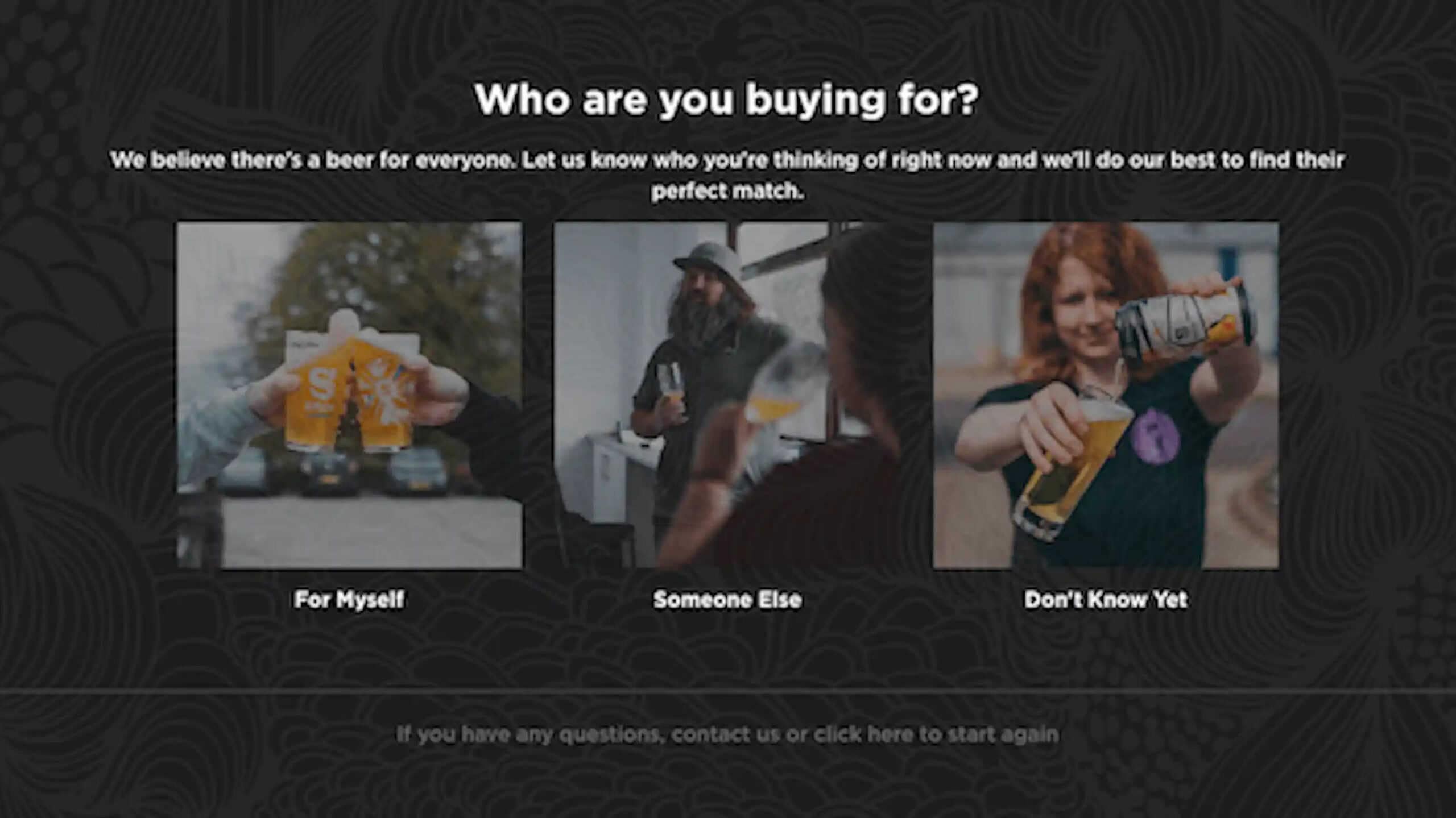
A question still to be answered is how we show greater recognition of cultural diversity in Christmas marketing campaigns. For example, winter celebrations include two important festivals of light – the Hindu festival of Diwali and Chanukkah, celebrated by the Jewish community – but these barely get a look in for seasonal marketing spend. Is there a way to be more inclusive, without diminishing the mainstream festive jolliness?
Visual Appeal and Storytelling.
It’s quite incredible, but it’s now the advertising industry that actually signals the arrival of Christmas to the People. The power of visual storytelling cannot be overstated here.
As soon we spot the outrageously illuminated red articulated lorry coming to town, weep at this year’s mega-ad brand film or hear the words: “This is not just any festive prawn ring….”, we’re being triggered to believe that it’s beginning to feel a lot like Christmas.
Limited-Time Offers and Scarcity.
The great thing about Christmas for marketers, is that it has a fixed and predictable date to work to.
The sense of urgency is a powerful psychological motivator. Christmas marketing thrives on limited-time offers and a touch of scarcity as we lead up to the big day. Creative marketing agencies design campaigns that highlight exclusive holiday deals, limited edition products, time-sensitive promotions and delivery deadlines. This not only taps into consumer's fear of missing out, but also encourages prompt action and impulse spending almost bypassing the conscious mind altogether.
Finding your ownable space between the tinsel and snowflakes.
By understanding the psychology of Christmas, embracing visual storytelling, personalizing campaigns, creating a sense of urgency, leveraging social media and influencers, and integrating cutting-edge technology, creative agencies can help clients stand out in the crowded holiday marketplace, with an authentic voice and an ownable bit of Christmas.
And while we don’t see Santa being cancelled any time soon, Christmas marketing is definitely going through something of an evolution.
Meanwhile, may your brand be merry and bright in 2024, and if you need a fresh creative perspective, give us a shout!
The first decade or so of my career was spent in large, traditional, global agencies, in which I endured a painful week at the end of every month arguing with clients over billable hours. Then I went client-side for the next few years and endured the same painful week at the end of every month arguing with agencies over billable hours!
The following familiar refrains, or similar, will likely echo in the minds of anyone from either side of the client/agency fence:
Agency:
“We’ve overserviced the account and need to cut hours next month to compensate.”
“Yes it really does take us six weeks to write 250 words of copy.”
“We’ve been overservicing your account due to the number of client revisions and need to review the fee.”
Client:
“What have the hours I’m paying you for actually bought me?”
“How have you burned through the year’s billable hours in just 5 months?
“How much!!!???”
The traditional agency model has long relied on the concept of billable hours to measure agency productivity, allocate costs, and calculate client invoices. But much like casinos, the odds are always stacked in favour of the house!
It’s precisely this imbalance and associated frustration that led to the birth of our agency and Early’s All You Can Eat (AYCE) Marketing & Creative proposition. It’s a paradigm shift from the norm: no timesheets, no clocks a ticking, no invoice shocks, and no month-end arguments. Just a fair, honest, delivery-led approach that generates stunning creative, results-driven marketing, 100% client satisfaction scores, and peace and love all round.
Let’s let the cat out the bag on the rigid, inflexible agency billable hours system and why it’s at best unfair, at worst downright scandalous, and by extension, totally obsolete.
And then we’ll look at the fairer alternative.
- Timesheets are fatally flawed!
The entire concept of recording time is bunkum. It reliably fails to accurately reflect the actual hours spent. So much so, you could set your watch by it!
I’d like to bet you, the last 15 minutes of every Friday afternoon in every agency up and down the land is spent doing timesheets. Teams of individuals rushing as the clock ticks down to the pulling of the first pint of the weekend. Individuals struggling to remember and record the hours they’ve spent on client work since Monday, and then throwing in a load of hooky hours to justify their existence and the client fee. It’s like treading a tightrope, precariously balancing the need for agency profitability with client believability.
Even with so-called ‘real-time’ digital timesheet software, human input is required and intervention is always possible to get the numbers to add up in the agency’s commercial favour. And believe me, they always will! - Even if timesheets were accurate (which they rarely are), there are drawbacks to counting hours, because creativity just takes time.
The billable hours model, once hailed as a reliable way to quantify effort, is showing its limitations in today's dynamic and fast-paced business environment. It tends to reward quantity over quality, units of time over value, promoting an assembly-line mentality where employees are encouraged to bill as many hours as possible, rather than focusing on delivering the best possible outcome.
Creativity requires time. Simple. There I said it.
It’s often thinking time, time in the shower or at the gym. Sometimes at the desk or around a boardroom table. Sometimes alone. Sometimes collaborating or brainstorming with others. And the amount of time needed to come up with that Cannes Lion Award-winning concept is very unpredictable.
Limits on thinking time are often strictly controlled in larger agencies, not because of client deadlines, but purely to hit productivity and profitability metrics, given their organisational overheads. And when the timesheet clock is ticking, creativity and innovation get stifled, the casualties of billable hours as employees are pressured to conform to rigid time constraints rather than nurturing their creative processes.
Demanding an agency team to be creative instantly in the next 2 hours of allocated billable time, is like saying to an off-duty comedian in the supermarket: “Be funny. NOW!” - “We’re just naturally creative” (…said every agency, especially at the pitch stage.)
Creative is a process that starts with human thinking. Yes, AI may have an emerging role to play, but machines don’t have the emotion and lived experiences that result in great creative thinking. But, all too often, agencies are either too scared to ask clients, or clients are unprepared to have a line on their budgets called “Thinking time”. After all, as already discussed, we rarely know how much time it will take. As a result, thinking – the most invaluable agency commodity and critical part of the process – is often notoriously loaded into the billable hours system in other, more scurrilous ways.
And in our digital era of instant gratification and competitive climate, agencies pitching for new business will often try to convince clients that their brilliant, natural creative minds can deliver world class ideas at the speed of a TikTok video being posted. They can’t. - The iteration sponge.
Creative can take multiple rounds of revision for a client to be truly, and justifiably satisfied. By its very nature, creative is an iterative process. In an agency world awash with billable hours, it actually makes commercial sense for the agency to do as many iterations as possible, rather than getting it right early doors. After all, the client is paying, and iteration soaks up lovely billable hours like a sponge. Revision time provides yet another deep dark corner for agencies to ‘hide’ billable time, to justify fees. - Billshock.
In many cases, clients are left feeling frustrated when they receive invoices that are disconnected from the outcomes achieved. The perceived value of those 129 billable hours at £325 per hour, may be seriously at odds with the client’s perspective on the value generated. This misalignment can erode trust and seriously strain or even destroy client-agency relationships, something I witnessed time and time again in my ‘big agency’ days.
At Early, we don’t have a single timesheet. Never have. Never will. (cue choir of singing angels)
We like to think we’ve been around the block enough to know how to price work in ways that are fair, affordable, deliver stunning results for our clients, and still make us a modest margin to continue growing a successful agency, doing world-class work, with clients we love.
So, at Early, our clients agree a set, fixed fee for a piece of work or, in the case of retainers, a monthly Scope of Work. After that, the time risk becomes ours, with a firm commitment to adhere to all deadlines.
Whether it takes 3 hours or 3 days for creative juices to flow, the fee stays the same. Whether we strike gold with a winning concept on day 1 or with revisions, by day 30, the fee remains the same. Whether the brief remains intact, or the client tweaks it a few times during the process, the fee remains the same. And we apply this principle across our full-service spectrum of capabilities, from strategy to execution, one-off marketing projects to entire campaign management, and every creative medium and format imaginable.
Or as we like to call it, All You Can Eat (AYCE) Marketing & Creative.
Our AYCE mindset and the shift from hours to results, fosters a stronger sense of collaboration, partnership and shared success for both parties, and it’s what’s led to senior client testimonials like this from Michael Bayle, VP of Marketing, Product Marketing and Pre-Sales for Cytric Easy, Amadeus’ new business travel innovation with Microsoft:
“The Early team has helped us push our thinking, challenge the status quo and reach into new and engaging creative spaces for Cytric Easy. Early has consistently delivered the level of thinking, creativity and high-quality execution normally expected of larger agencies, but with lightning speed. Our relationship is marked by professionalism and expertise, underpinned by great client service, true collaboration and good humour.”
Michael Bayle, VP of Marketing, Product Marketing and Pre-Sales for Cytric Easy
The era of agency billable hours has to come to an end. If you’re not getting the value you think you deserve from your marketing and creative spend, or you simply want to learn more about Early’s refreshingly honest AYCE Marketing & Creative model, we’d love to have a chat.
Feel free to give us a shout.
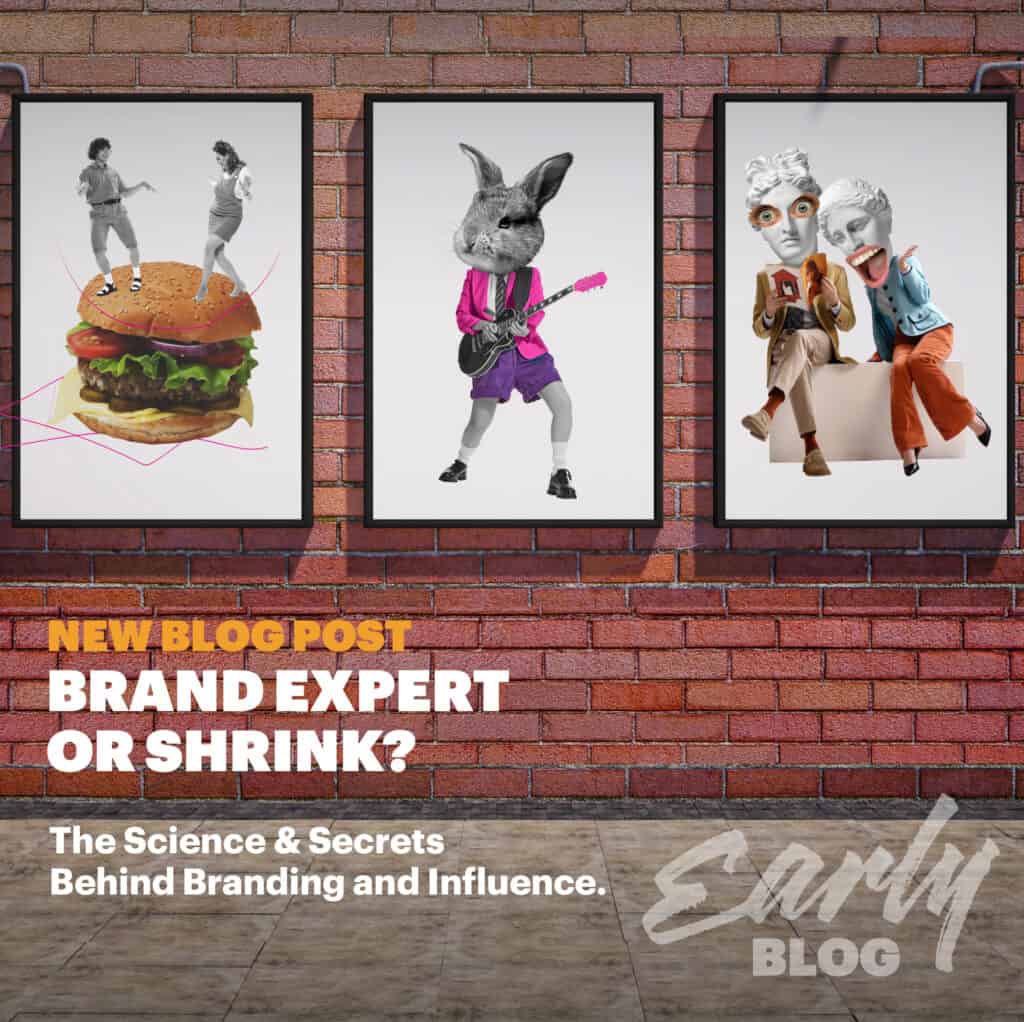
If you thought branding was all pretty pictures and fancy words, think again. The art of logos, colours and sexy phrases matter for sure, but there’s lots of clever science & psychology sitting behind these creative decisions that branding professionals like us use every day to entice, seduce and lock-in customer loyalty.
Here are the top ten neuroscience secrets every branding professional should know:
- Neural Engagement: Neuroimaging studies have shown that strong brands can increase neural engagement by up to 60%1 compared to weak or unfamiliar brands. Neural engagement happens when something strikes a relevant chord and creates pathways in the human brain. And nothing screams, “You want me”, more than your brand promising to solve a problem. This is why we work forensically at the start and throughout our client relationships on understanding what makes the audience tick, through research and data-driven insights that inform our creativity and storytelling. Our agency mantra: "Always fall in love with your customer problem, before you fall in love with your product or service."
1 Source: Martin Lindstrom, "Buyology: Truth and Lies About Why We Buy"
- Emotional Impact: Effective branding can lead to a 31% increase in emotional response2, which is a crucial factor in influencing consumer decisions. It’s a cliché to say that we buy with our hearts, but in terms of brand, no truer words have ever been spoken. Our work aims to have customers fall head over heels in love with our client’s brands. And once they're in love, it’s half the battle won in getting them to buy the products that solve their problem(s).
2 Source: Nielsen Consumer Neuroscience
- Memory Retention: Branding elements that are congruent with the content can improve memory retention by 89%3. Nobody enjoys that familiar let down of watching an ad, only to ask, “What the hell was that all about?” And how many times have you found yourself confusing one brand with another? So, think, what’s different, what’s unusual, exciting or unexpected, what could be truly memorable and stand-out about your brand? These are the questions we help Early clients answer every day.
3 Source: Journal of Neuroscience, Psychology, and Economics
- Neural Activation in Different Brain Areas: OK, let’s go real science nerd for the next few. Exposure to a well-branded logo can activate the brain's ventral striatum (associated with reward) by 10%, and the medial prefrontal cortex (associated with self-identity and personal relevance) by 5%4. That means that great branding actually makes us feel good! They give us a sense of value, a sense of ownership, and help to shape who we show up as.
4 Source: Journal of Marketing Research
- Visual Processing Speed: Brands we recognise are processed 20% faster5 in the brain's visual processing areas compared to unfamiliar brands. That’s not an excuse to spam the life out of your audience until you become memorable (our brains are also wired to reject inputs we perceive as threatening). Nor does it necessitate the need to spend millions projecting your logo onto the face of Big Ben! Creating familiarity comes in many different forms of marketing and creative strategy. Let’s just say for now, it’s critical to look, sound and feel different to your competition in an authentic way your audience will connect to and love.
5 Source: Various Scientific Reports
- Dopamine Release: Branding experiences that trigger a dopamine release can lead to a 20% increase6 in intent to purchase. Not only does dopamine make you feel good, in biochemistry terms it helps nerve cells send messages to each other. So, a happy brain, really is a receptive buying brain. In much of our campaign creative, and in some of the most unlikely of scenarios, we aim to elicit a smile, a chuckle, or an outright LOL. That’s often all it takes to release the happy juice.
6 Source: Neuron
- Preference and Decision-Making: Research has confirmed that the brain's preference centre (ventromedial prefrontal cortex) is more active when consumers interact with preferred brands, influencing decisions and leading to a 10-15% increase in purchase intent7. At Early, we aim to engage the brain in diverse ways along the customer journey. We first need to gain attention and engage, getting the synapses firing, ready for messages to land successfully and help in the consideration phase and decision-making process later on. We then deploy desired-action techniques to make the decision happen in favour of our client’s brands. Finally, we want customers to feel good about those decisions, to retain their loyalty, repeat business and promote brand advocacy. Good branding is a carefully crafted process, not a one-time event.
7 Source: Journal of Consumer Psychology
- Price Perception: Neuroeconomics studies have revealed that strong branding can influence the brain's valuation system, leading consumers to perceive a product's value as up to 30%8 higher. So that’s the pure bottom-line effect of influencing what happens inside our heads. But when price is in play, it’s deeper than that still. You need look no further than ‘own-brand’ discount retailers such as Aldi, to see how subtle and nuanced the psychological impact of branding actually is. They call themselves ‘own brand’ retailers when what they really are is ‘brand copycats’. Like the most famous masters of forgery, they know that were they to turn the colour palette for their version of Lurpak Butter green with pink spots, the illusion and warmth created by the original brand would be lost entirely.
8 Source: Journal of Marketing Research
- Trust and Brand Loyalty: Effective branding can increase trust and brand loyalty by up to 10%, driving repeat purchas and long-term customer relationships. In today’s world, customers actively seek brands they can trust, brands they feel are aligned with their own values, brands that are authentically on their side. Of course, a reliable product is critical as well, but it’s often an expertly crafted brand that gets them to trust, try, buy and come back for more.
9 Source: Psychology & Marketing
- Attention and Recall: Strong branding increases visual attention and recall by 13%10, contributing to better brand affinity. So, what is it that makes your customers notice, believe and act? Well, simply put, see all the above.
10 Source: Marketing Science
It's important to note that the impact of branding on the brain can vary based on factors such as individual differences or neurodiversity, cultural context, and the specific elements of branding being studied. The above provides a glimpse into some quantifiable effects of branding on the brain, highlighting how brand strategies can leverage neuroscience to create stronger connections with consumers. And this is what we do, day in, day out at Early (as well as creating the fancy pictures and sexy words).
About the author:
Neal Fullman is Co-founder and CEO of Early Marketing & Creative. He has worked with brands as diverse as O2, Sony, The FA, Tetley Teas, The International Tennis Federation, GetTaxi and Castlemaine lager, as well as multiple B2B brands looking to differentiate themselves and stand out from the competition.
To talk to us about using the science behind your brand to deliver unforgettable creative that improves commercial performance, feel free to give us a shout.
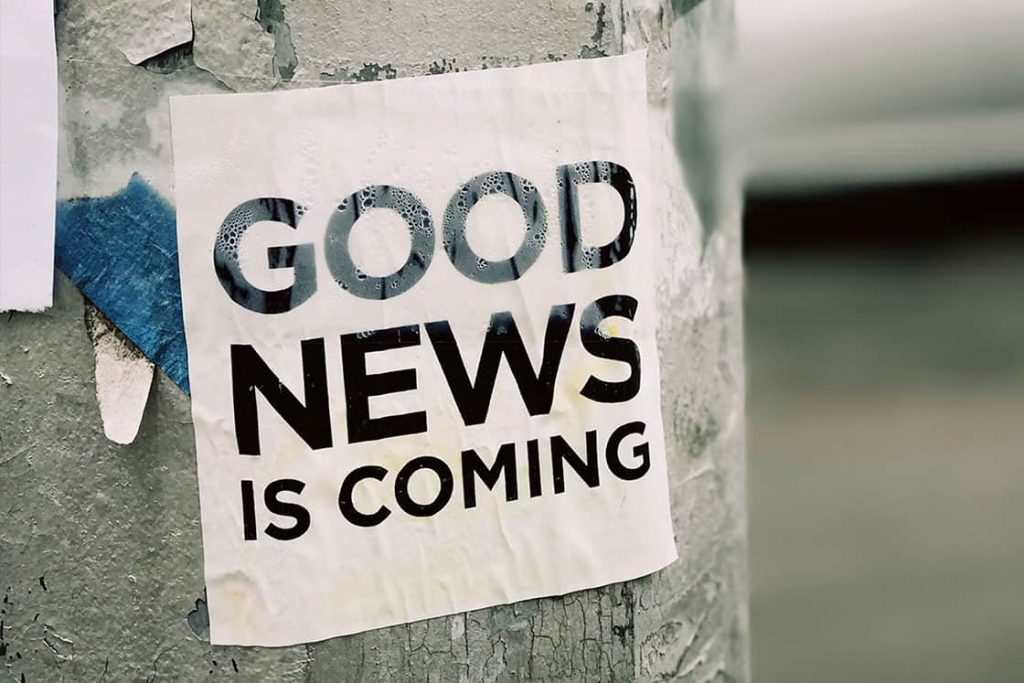
The FA launched FA Playmaker in association with BT, announced a revamp of its education programme for football coaches and unveiled its new online community for grassroots football. Launch videos and marketing assets produced by Early:
Caterpillar equipment’s global distributor Finning took on a whole new cheeky look for its industrial machinery ad campaigns and web content in the UK, Ireland and Canada......designed and delivered by Early:
Perfume brand, Miss SO, launched a new in-store campaign for its ranges in Europe and US retailers.......range promo videos designed and produced by Early:
Early brought in Thomas Coupland from the FA to run its Sports business, cryptically called Early Sports.....

Flora Hopewell also joined the Early crew, following an internship at Canon, to project manage some of our biggest client accounts.


2020 made everyone think. Really think. It reshaped our audiences, relationships, lifestyle, and social lives. It was the year of the digital revolution.
So, what does this mean for 2021? Will the virtual necessities of 2020 become permanent?
What we do know is that there are already trends you need to be aware of. Here are our top three.
1. Online events will thrive
Virtual classrooms, conferences, gigs, and pub quizzes have become such an important way of accessing education, culture, and live entertainment. It’s our new norm.
We’ve seen the flexibility, accessibility, and economy of taking everything online. There’s no travel required. They’re not expensive to run or attend. And they come with features and interesting perks that cater for higher participation, not just from guests but also from speakers.
These aren’t just great benefits for your existing audiences, they are great for opening up your events to entirely new groups.
If you haven’t invested in this space, why not start now?
2. Personalise, Personalise, Personalise
Without the option of physical consumer experiences, customers are demanding greater personalisation with their digital ones.
Personalised recommendations and communications are standard now, and any brand lacking is falling behind.
Expertise creates trust and credibility, in any form. If you haven’t already, you need to look into capturing and utilising consumer data. You need to understand your audiences’ habits perhaps more than they understand themselves.
Amazon is – obviously – a leading example. How they suggest products to buy and explore, know exactly where you are in your buying cycle, and use this information in meaningful and personal ways leads the way in using data to shape a truly personal shopping experience.
3. Extending shopping experience to social media
It’s already begun in some cases, but 2021 will see the rise of in-app purchasing on social media.
Like Instagram Shops. Users can move through the buying cycle from awareness to purchase without ever leaving the app.
It can be a great way to shop – everything’s in one place. But they need to be careful.
Instagram were first criticised for monetising the platform after introducing ads, and now many see the Shops feature as just another money grabber.
Design your presence as a natural extension of your customer’s social media experience. Rather than the hard sell, it’s more of a casual suggestion thing. When it’s done right, it can be huge.

